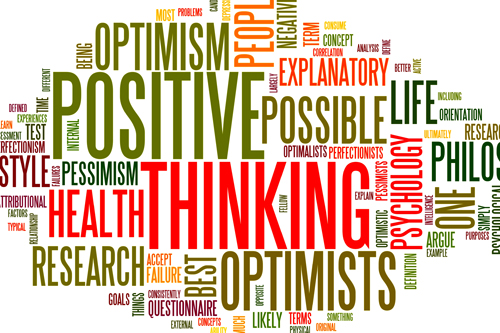When I began working at an in-house job after five years as a freelancer, I was shocked to see other employees texting away during meetings. They entered the conference room glued to their mobiles and rarely looked up from their devices as the meeting continued. Somehow they managed to make comments and answer questions without taking their eyes off the glowing presences in their palms.
I was witnessing the phenomenon of multitasking. Or what I thought was multitasking. Since then I have learned something.
Multitasking is not possible.
In our era of advanced information processing and connectivity, we think can we do it all, all the time. We relentlessly input this and output that, fingers darting across the surfaces of iPhones, iPods, laptops, or desktops. But what is called “multitasking” is actually not multitasking. According to John Medina, Ph.D., a developmental microbiologist and the author of Brain Rules: “Research shows that we can’t multitask. We are biologically incapable of processing attention-rich inputs simultaneously.”
When we think we’re doing many things at once, we’re actually rapidly switching between tasks. As studies show, this behavior doesn’t save time or increase efficiency, but it does have one effect: it worsens performance. Multitasking also changes the way our brains are supposed to work.
Divide and…Be Conquered
When we pay attention to something, both the right and left sides of the prefrontal cortex in our brain are activated. The two sides work together, as well as coordinate messages with other areas of the brain to enhance performance. The posterior parietal lobe (behind the cerebral cortex) helps manage switching between tasks. Meanwhile, the anterior cingulate gyrus (above the corpus callosum, the bundle of nerve fibers that connects the two hemispheres of the brain) looks out for errors in our performance. The alliance between the two sides of prefrontal cortex is compromised when we multitask because then the left side of the brain focuses on one task and the right side focuses on the other.
Differences in brain activity between mono- and multitasking have been detected via brain imaging, as shown by a study conducted at the Institut National de la Santé et de la Recherche Médicale (INSERM) in Paris.1 Researchers measured brain patterns with magnetic resonance imaging (MRI) in study participants who had been asked to complete two tasks involving letter matching at the same time. When told they would be given a greater reward for completing one of the tasks, one side of the prefrontal cortex became more active. When told the reward would be larger for the other task, activity increased in the other side of the brain.

People who talk on a cellphone while walking are much less cognizant of what’s around them—even when a startling image comes into view. One study found that passersby talking on their mobiles were much less likely to notice or remember a clown riding a unicycle past them than those not using a cellphone.
If the brain devotes one side of itself for each of two tasks, what happens when there are three tasks? When participants were asked to complete three, they often forgot one of the tasks altogether. They also made three times as many errors compared to handling two tasks.
Since switching happens so quickly that we barely perceive it, you might think it doesn’t matter. But when this tiny delay is repeated over and over, the inefficiency can add up. According to behavioral scientist Susan Weinschenk, Ph.D., in Psychology Today, even switches lasting only one-tenth of a second could reduce daily productivity by 40%.2
Relentless switching impairs our ability to filter out irrelevant stimuli and prioritize information, and it may cause us to favor one target of our attention over another without good reason. We may linger longer on what’s easier to take in, for example, even if the value of the content is low.
Shortening the attention span on a task also hampers our short-term memory, which can compromise learning. Typical scenario: someone who’s talking on the phone and trying to respond to an email at the same time. Less focus will be devoted to the conversation, so less of it will be remembered than if it was the sole focus.
Multitasking Is Addictive Because It Makes Us Feel Good
Alas, multitasking is a tough habit to break. It’s very satisfying to think we are taking care of a lot of things in a short period of time, even though it’s an illusion. This feeling of satisfaction reinforces the behavior and makes multitasking more likely to be repeated.
In a study performed at Ohio State University,3 32 students were asked to monitor their use of all media and other activities for four weeks. Even though multitasking was found to have a negative effect on their study and work projects, the students tended to engage in it when doing cognitive tasks because it made them feel better emotionally. “This is worrisome because students begin to feel like they need to have the TV on or they need to continually check their text messages or computer while they do their homework,” noted Zheng Wang, Ph.D., an assistant professor of communications at Ohio State who led the study. “It’s not helping them, but they get an emotional reward that keeps them doing it.”
Do you think you might be spending too much time on Facebook, Google+, Twitter, Instagram, Pinterest, Vine, Snapchat, or any other social media when you have “real” work to do?
Here are 11 tips for cutting back:
- Take a daily time out. It can refresh the mind—and give your eyes and fingers a break—when you disconnect from mobile devices for at least part of the day. Try turning off your phone if the temptation to use it during a break is too great.
- Change the daily routine. Having the same routine every day can put you on autopilot, making you unaware of being in a continual multitasking mode. Organize your day into different times for different activities, and vary the routine from day to day to avoid getting into a rut.
- Go shopping without your mobile. Unless it’s essential for you to stay in touch when shopping or running an errand, try leaving your mobile device at home. You’ll probably take care of business faster if you do.
- Meditate. Turning off your devices and turning inward for some mindfulness can help you de-stress, as well as sharpen your focus once the session is over. Try a chanting meditation to get more senses involved and enhance your deep breathing.
- Take multitasking off the menu during mealtime. Working while you eat can be stressful and is not good for your digestion. Limiting mealtimes to just eating also tends to make you eat more slowly and have a greater appreciation of the sensual delights of food.
- Mute it once in a while. Is it really necessary to constantly be alerted every time you get a new email or text? Those little alarms may keep you connected, but they are also jarring and interrupting, adding jolts of stress to our already stressful lives.
- Check out the real world around you. Instead of remaining merged with your mobile when walking down the street or anywhere else, wake up and catch the scenery. Put the phone down, then look around, listen, and inhale deeply to give your senses a workout they won’t get when you stare at a digital display. You might just see something unforgettable (see sidebar).
- Make certain rooms at home mobile-free. Leave your device in a designated area when entering a mobile-free zone. It will be relaxing and you’ll be more likely to talk with family members or roommates.
- Don’t bring mobiles to meetings, unless truly necessary for the business at hand. You can’t fully focus on what’s going on in a meeting if constantly diverted by texts and emails.
- Take an exercise break…without your mobile. It’s a great way to de-stress from all the attempted multitasking. Be sure to shake your hands out to refresh them from all their poking.
- Read more things in print. A book, magazine, or newspaper…it doesn’t matter. If you’re not reading something online, you won’t be as tempted to take a peek at your email or texts. You’ll absorb more of what you’re reading.
Get out of the multitasking ICU now. Unhook yourself from all the wires and monitors and screens. Silence the beeps and blips. Don’t worry: You won’t get left in the dust. In fact, you’ll come out ahead.
References
- Telis, Gisela. “Multitasking Splits the Brain.” Science. April 15, 2010.
- Weinschenk, Susan. “The True Cost of Multi-Tasking.” Psychology Today. September 18, 2002.
- Grabmeier, Jeff. “Multitasking May Hurt Your Performance, But It Makes You Feel Better.” Ohio State University. Research News. April 12, 2012
Click here to get inspired by Rose’s easy steps to positively change your mind



